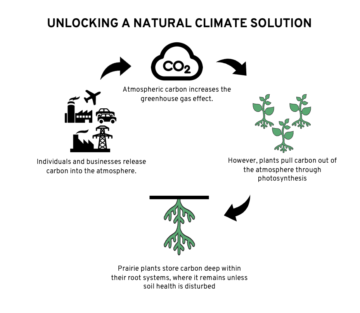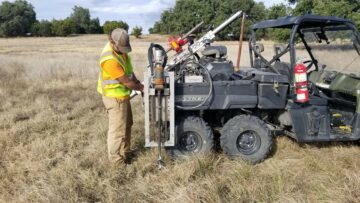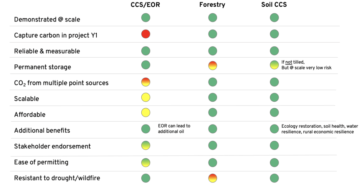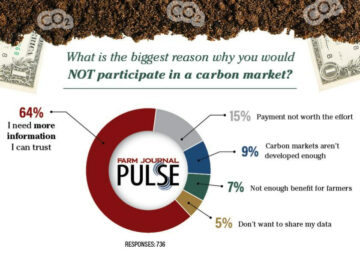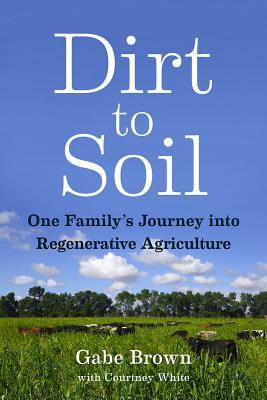
- HOW DOES SOIL CARBON STORAGE WORK?
In a nutshell, soil carbon storage works through a natural process where plants pull carbon dioxide out of the atmosphere through photosynthesis. Prairie plants absorb carbon dioxide and draw the carbon deep down into their root systems in the soil. The healthier the soil, the healthier the plant life with more biodiversity, which leads to more carbon sequestration. You can read more about how soil carbon storage works at our blog post here.
- IS SOIL CARBON STORAGE AN OFFSET?
No, an offset is essentially a carbon hostage situation: “pay me or I will cut down this tree.” The natural process of photosynthesis by which soil carbon storage works actually removes carbon from the atmosphere. It is sometimes also called carbon drawdown or carbon capture and storage. If you’re technologically minded, you can think of soil carbon storage as Soil CCS.
- FORESTRY CREDITS ARE CURRENTLY CHEAPER THAN SOIL CARBON STORAGE CREDITS. WHY SHOULDN’T SOMEONE JUST BUY FORESTRY OFFSETS?
We encourage every company to have a robust carbon footprint mitigation portfolio. That said, there are many advantages to soil carbon storage over forestry. First, it’s important to remember that we are discussing storage, not offsets. With forestry, the difference is akin to what we, at GRC, call a “carbon hostage situation.” The difference between a forestry offset and forestry storage is “pay me or I will cut down this tree” versus “pay me and I will plant a tree.”
The two biggest differences between forestry and soil carbon storage are resiliency and land use changes. Soil carbon storage is more resilient to drought and wildfires. During drought periods, a tree may die, which causes its storage to be lost. Conversely, since carbon is stored deep within soil with soil carbon storage, the storage is not lost during a drought – the land simply may not accumulate as much new storage as it would do in a wetter year. Similarly, a wildfire would kill a tree and destroy its storage.
Planting forests where there were none previously can lead to unintended problems that can negatively affect the climate. Trees have the potential to actually warm the local climate, emit VOCs, can lead to water scarcity, and can negatively impact biodiversity. There is an additional issue of space: forestry requires a land use change. Soil carbon storage simply requires a land management change.
- WHAT DETERMINES THE PER TON PRICE FOR SOIL CARBON STORAGE CREDITS?
As with any marketplace, the price depends on supply and demand and the price of alternatives. In addition to Grassroots Carbon delivering BCarbon credits, carbon storage service buyers can choose from several different types of carbon storage, such as forestry-based carbon credits. Each different type of carbon credit has its own unique characteristics and risks, which can be compelling to certain buyers. There is a general expectation that carbon storage prices will go up over time as climate crisis pressure increases.
- IS THERE A MAXIMUM AMOUNT OF CARBON THAT THE SOIL CAN HOLD?
Based on research done by Steve Apfelbaum and Dr. Richard Teague, it is assumed that most grazing lands can store carbon on a continuous basis for at least 50-80 years before the rate of additional storage begins to level off. The numbers depend on the state of land degradation. Most grasslands in the US have lost more than half of their soil carbon. Much more can be added through land management practices that restore soil health. Recent work shows that when biodiversity thrives, nature continues to store and use carbon and soil starts to build up.
- IS THERE AN OPTIMAL TYPE OF SOIL FOR SOIL CARBON STORAGE?
There are three main factors influencing the ability of a given soil type to retain soil organic carbon:
- Soil Type: Naturally occurring clay in soil binds to organic matter, which helps to protect it from being broken down or limits access to it by microbes and other organisms. Organic matter in coarse-textured sandy soils is not protected from microbial attack and is rapidly decomposed.
- Climate: In comparable farming systems with similar soil type and management, soil organic matter increases with rainfall. This is because increasing rainfall supports greater plant growth, which results in more organic matter accumulating in the soil. Organic matter decomposes more slowly as temperatures decrease. This means moist, warm conditions will often result in the most rapid decomposition of organic inputs.
- Land and soil management
In general, soil with higher clay content can store more carbon. The clay particles adsorb (the chemical process of one molecule coating another) to the carbon in the organic matter in the soil, creating a physical barrier that protects the carbon from microorganisms. At the opposite end of the spectrum, soil with high sand content is very porous and does not adsorb well to the carbon, making it easy for microorganisms to access the organic matter, increasing decomposition. However, just having soil with high clay or high sand content doesn’t alone determine soil carbon storage; factors like climate and land management also play a major role (see Q7 – How many tCO2/acre can my land store?)
- HOW MANY TCO2/ACRE CAN LAND STORE?
Soil carbon storage is based on three factors: soil type, climate, and land management practices. In general, soil with higher clay content tends to hold more carbon, giving the highest potential storage. However, climate factors (ex: rainfall, temperature, snow cover) play a role as well. A longer growing season increases the potential for more soil carbon storage. Finally, land management practices play a critical role in soil carbon storage potential. Two neighbors with the same soil type and climate may have dramatic differences in soil carbon storage because of how they manage their land: one neighbor may be destroying their soil health through tilling and fertilizer while their neighbor using AMP grazing has very high soil carbon storage.
Since all three of these factors are so closely related in determining soil carbon storage and can vary across a state or region, Grassroots Carbon takes actual measurements at the start of the contract to determine soil carbon storage.
- IS THERE A CERTIFICATION OR STANDARD FOR SOIL CARBON STORAGE?
Yes, there are several options for soil carbon certification. These registries include the American Carbon Registry (ACR), BCarbon, Climate Action Reserve (CAR), Gold Standard, and Verra. Grassroots Carbon prefers and sells soil carbon storage credits under the BCarbon standard, which was selected because of its rigorous, measurement-based approach and the fact that it only certifies the actual increase in soil carbon storage. Additionally, BCarbon allows landowners who are already practicing regenerative practices to participate in its program, meaning that early adopters are not punished for good practices. You can learn more about BCarbon here.
- WHAT IS THE PERMANENCE OF SOIL CARBON STORAGE?
Soil is very good at storing carbon. Near surface soil contains more carbon than all atmospheric carbon and all plant carbon combined. In most of the US, you can reach soil that is thousands of years old at just one meter depth. In some parts of the US, the average carbon age of soil is 3-5 million years old at just 0.2-0.5 meters deep. As long as soil health is not destroyed, soil can continue to accrue storage. An excellent way to think about the ability of soil to build up over time is to think about how archaeological sites always have to be dug out of the earth.
- IS SOIL CARBON STORAGE A SCALABLE SOLUTION?
Yes. This natural carbon sink could store 0.6 – 1.5 BILLION tons of carbon dioxide per year in the USA if we restore just half of our grasslands. Additionally, there would be no land change required: 40% of US land revolves around livestock. To restore these grasslands, we just need to change how we manage cattle, not how the land is used.
TO LEARN MORE ABOUT HOW SOIL CARBON STORAGE COULD BE A SOLUTION FOR YOUR CARBON FOOTPRINT, VISIT OUR CARBON BUYER PAGE OR CONTACT US AT HOWDY@BUILDGRASSROOTS.COM
- SEO Powered Content & PR Distribution. Get Amplified Today.
- Platoblockchain. Web3 Metaverse Intelligence. Knowledge Amplified. Access Here.
- Source: https://buildgrassroots.com/top-10-questions-everyone-asks-about-soil-carbon-storage/
- 1
- 10
- 7
- 9
- a
- ability
- About
- access
- Accumulate
- across
- Action
- actually
- added
- addition
- Additional
- Additionally
- adopters
- advantages
- affect
- All
- allows
- alone
- already
- alternatives
- always
- American
- amount
- amp
- and
- Another
- approach
- around
- assumed
- Atmosphere
- atmospheric
- attack
- average
- barrier
- based
- basis
- bbc
- because
- before
- being
- between
- Biggest
- Billion
- Blog
- Broken
- build
- buy
- buyers
- call
- called
- capture
- car
- carbon
- carbon credits
- carbon dioxide
- causes
- certain
- Certification
- change
- Changes
- characteristics
- cheaper
- chemical
- Choose
- Climate
- climate crisis
- closely
- company
- comparable
- compelling
- conditions
- contact
- contains
- content
- continue
- continues
- continuous
- contract
- could
- cover
- Creating
- credit
- Credits
- crisis
- critical
- Currently
- Cut
- decrease
- deep
- delivering
- Demand
- depends
- depth
- destroy
- destroyed
- Determine
- determines
- determining
- Die
- difference
- differences
- different
- discussing
- Doesn’t
- down
- dramatic
- Drought
- during
- each
- Early
- early adopters
- earth
- encourage
- essentially
- everyone
- excellent
- expectation
- factors
- farming
- Finally
- First
- Footprint
- from
- General
- given
- Giving
- Go
- Gold
- Gold Standard
- good
- grassroots
- greater
- Growing
- Growth
- Half
- having
- Health
- healthier
- helps
- High
- higher
- highest
- hold
- How
- However
- HTTPS
- Impact
- important
- in
- include
- Increase
- Increases
- increasing
- influencing
- issue
- IT
- just one
- Kill
- Land
- landowners
- lands
- lead
- Leads
- LEARN
- Level
- Life
- limits
- local
- Long
- longer
- Main
- major
- Making
- manage
- management
- many
- marketplace
- Matter
- maximum
- maximum amount
- meaning
- means
- measurements
- minded
- mitigation
- molecule
- more
- most
- Natural
- Nature
- Near
- Need
- negatively
- neighbors
- New
- numbers
- offset
- Old
- ONE
- opposite
- optimal
- Options
- organic
- Other
- own
- participate
- parts
- periods
- Photosynthesis
- physical
- plants
- plato
- Plato Data Intelligence
- PlatoData
- Play
- portfolio
- Post
- potential
- practices
- pressure
- previously
- price
- Prices
- problems
- process
- Program
- protect
- protected
- Questions
- rapid
- rapidly
- Rate
- reach
- Read
- recent
- regenerative
- region
- registry
- related
- remember
- required
- requires
- research
- Reserve
- resilient
- result
- Results
- Richard
- rigorous
- risks
- robust
- Role
- root
- Said
- same
- SAND
- scalable
- Scarcity
- Season
- selected
- Sells
- sequestration
- service
- several
- Shows
- similar
- Similarly
- simply
- since
- Sites
- situation
- Slowly
- snow
- So
- solution
- some
- Someone
- Space
- Spectrum
- standard
- start
- starts
- State
- Steve
- storage
- store
- stored
- such
- supply
- Supply and Demand
- Supports
- Surface
- Systems
- takes
- The
- The State
- their
- thousands
- three
- Through
- time
- to
- Ton
- Ton price
- tons
- top
- Top 10
- Trees
- types
- under
- unique
- us
- USA
- use
- Versus
- warm
- Water
- What
- which
- while
- WHO
- will
- within
- Work
- works
- would
- year
- years
- Your
- zephyrnet

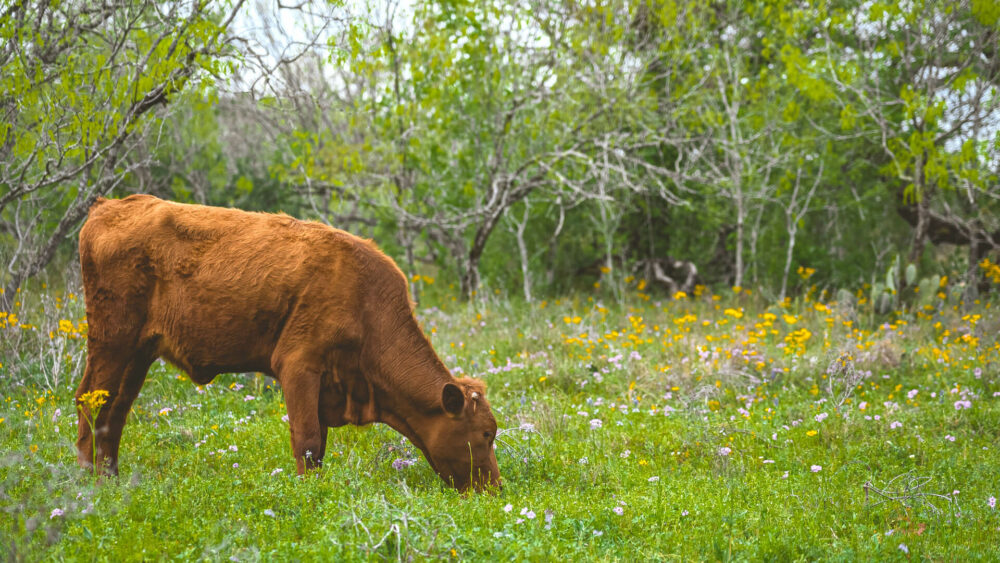
![How Nature Captures and Stores Carbon [Webinar]](https://platoaistream.com/wp-content/uploads/2022/12/how-nature-captures-and-stores-carbon-webinar.jpg)

![Grassroots Carbon Presents: “Soil Carbon Permanence, an Introductory Discussion” Featuring special guest Dr. Jocelyn Lavallee [Webinar]](https://platoaistream.com/wp-content/uploads/2022/12/grassroots-carbon-presents-soil-carbon-permanence-an-introductory-discussion-featuring-special-guest-dr-jocelyn-lavallee-webinar-360x240.jpg)
